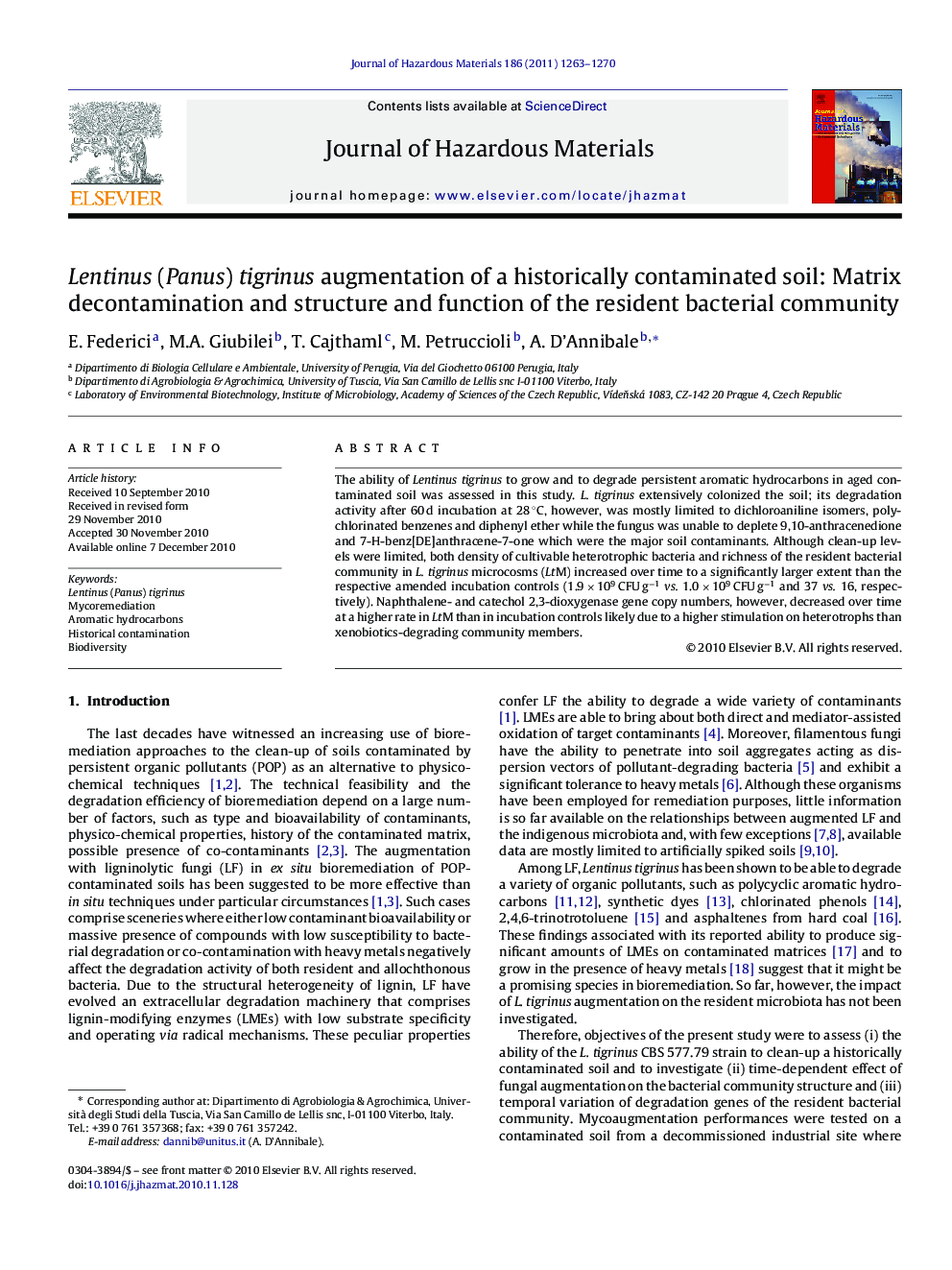| Article ID | Journal | Published Year | Pages | File Type |
|---|---|---|---|---|
| 6972671 | Journal of Hazardous Materials | 2011 | 8 Pages |
Abstract
The ability of Lentinus tigrinus to grow and to degrade persistent aromatic hydrocarbons in aged contaminated soil was assessed in this study. L. tigrinus extensively colonized the soil; its degradation activity after 60 d incubation at 28 °C, however, was mostly limited to dichloroaniline isomers, polychlorinated benzenes and diphenyl ether while the fungus was unable to deplete 9,10-anthracenedione and 7-H-benz[DE]anthracene-7-one which were the major soil contaminants. Although clean-up levels were limited, both density of cultivable heterotrophic bacteria and richness of the resident bacterial community in L. tigrinus microcosms (LtM) increased over time to a significantly larger extent than the respective amended incubation controls (1.9 Ã 109 CFU gâ1vs. 1.0 Ã 109 CFU gâ1 and 37 vs. 16, respectively). Naphthalene- and catechol 2,3-dioxygenase gene copy numbers, however, decreased over time at a higher rate in LtM than in incubation controls likely due to a higher stimulation on heterotrophs than xenobiotics-degrading community members.
Related Topics
Physical Sciences and Engineering
Chemical Engineering
Chemical Health and Safety
Authors
E. Federici, M.A. Giubilei, T. Cajthaml, M. Petruccioli, A. D'Annibale,
